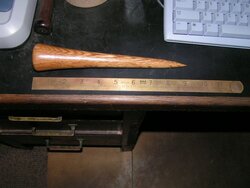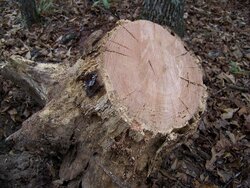Here's a little feedback:
I'm a newbie and didn't have any wood collected up to use in my
newly installed stove in November. I live on 20 heavily wooded acres and I intent to only use dead wood on the property for this stove, as my wife and I
live in the woods for a reason--we love trees and do not intend to cut down green ones.
Anyway, the first cord, all oak, seemed like good, seasoned wood to my amateur eye. It was relatively light. Grey in color. Loose or absent bark. It ignited quickly and burned completely without hissing or popping. I had good success with roaring hot fires despite being a new user of an Englander 12-FP (having a reputation of being a somewhat fickle stove).
This second cord is oak as well---probably exclusively red oak (although relatively impossible to know for sure on a dead, cut-up tree). I do not believe it is seasoned, though. The wood may have been down for a year, but I suspect it was only bucked and split recently. It is very dense and heavy. It is absolutely beautiful wood, having that rich pink color like that of smoked brisket. And it has a very strong oak smell. It has tight bark. When I try to burn it, it takes forever to get it to ignite, at which point, it makes puny smokey fires and often ends up going out leaving a charred, intact log. This wood, in my opinion, will not be ready to burn for at least a year and maybe two. I do not have a moisture meter, by the way.
So, instead of ordering more wood just yet, I thought I'd try scrounging my woods. In the original post, I queried about three-year standing dead oak. I believe the general consensus is "it depends, but don't get your hopes up". I think I got lucky...
I was able to actually push over one of the standing dead oaks. It was about 16" diameter at the base and no limbs to speak of. Most of the bark was gone. I expected punky wood. Man was I surprised. See the attached picture of the stump (remember this was pushed over). Some of the wood has about 1" of punk, but otherwise it is dense, dry wood. It split easily with my 8# maul.
While I was at it, I cut down another larger nearby standing dead oak with identical results (except it wouldn't push over).
Despite appearances, I didn't expect it to burn well given the tepid responses here. Man, was I surprised. It's burning like a dream. I've used wood from both trees and it ignites quickly and cleanly, providing good, hot, long-lasting fires. I'm a happy camper!




